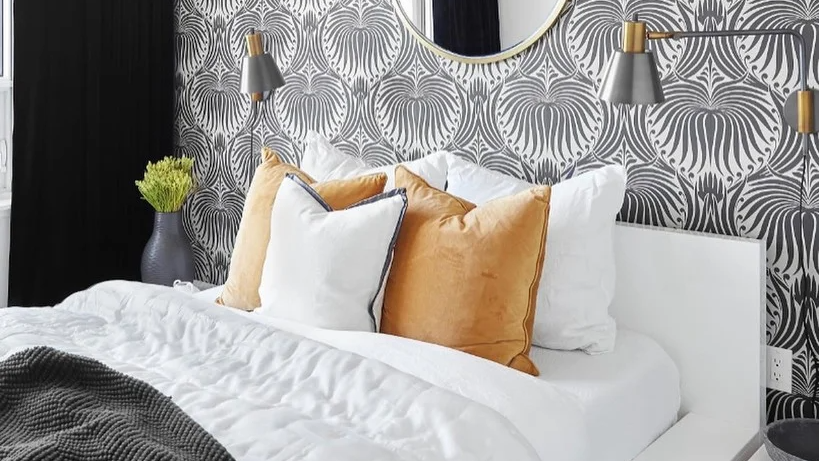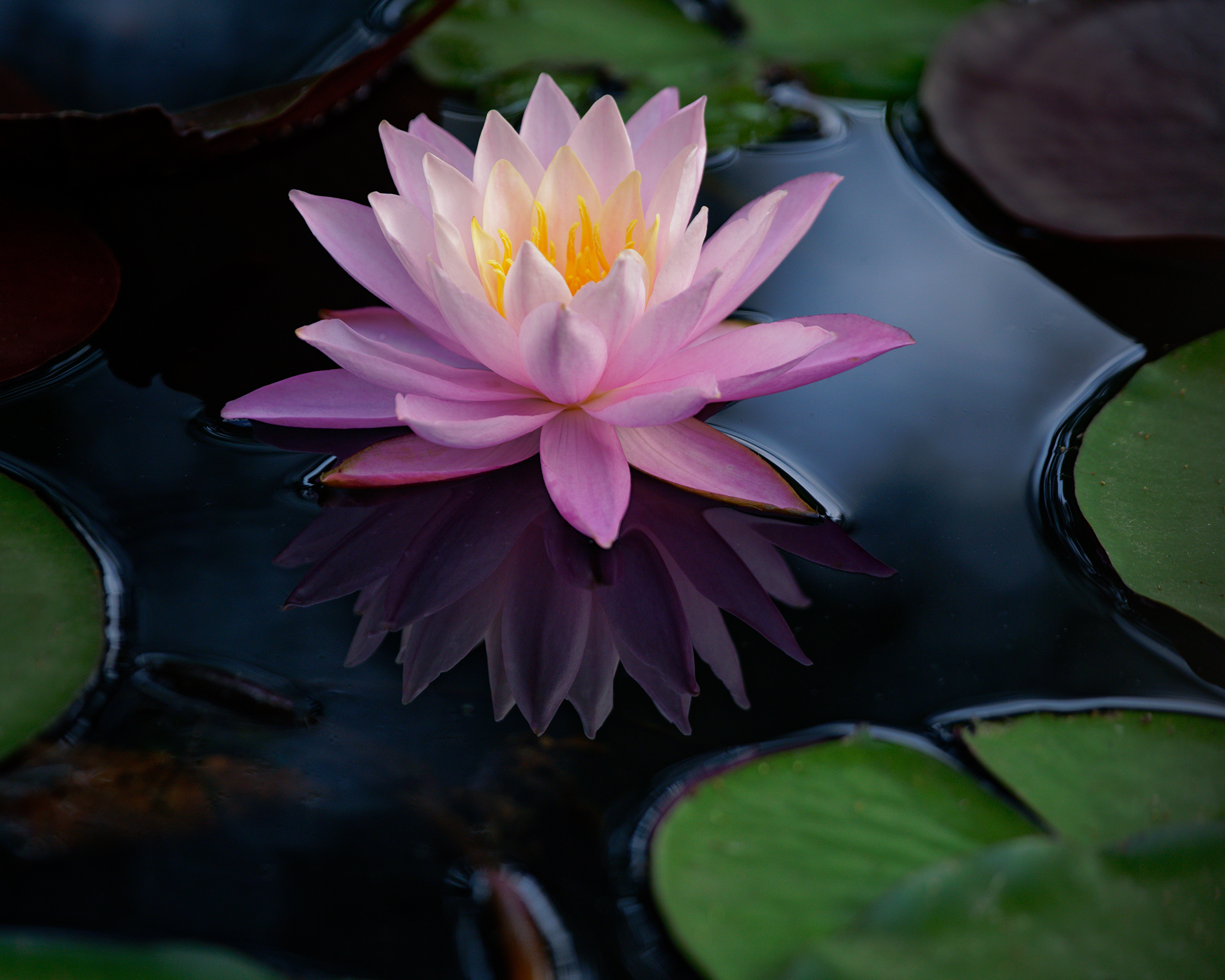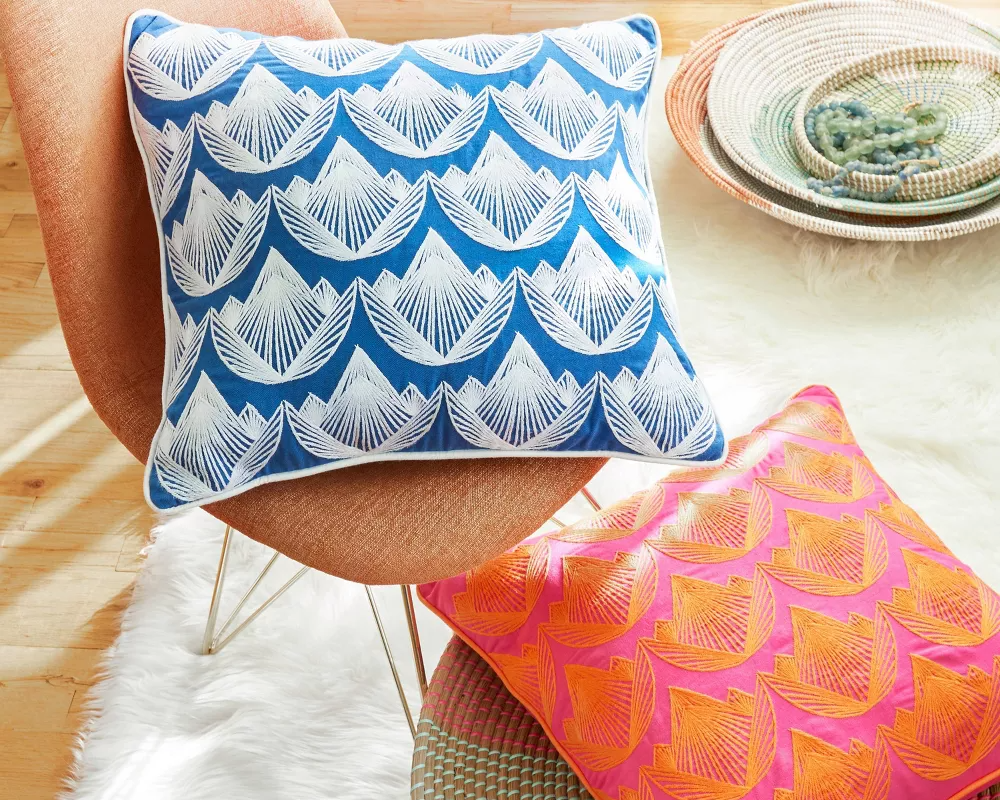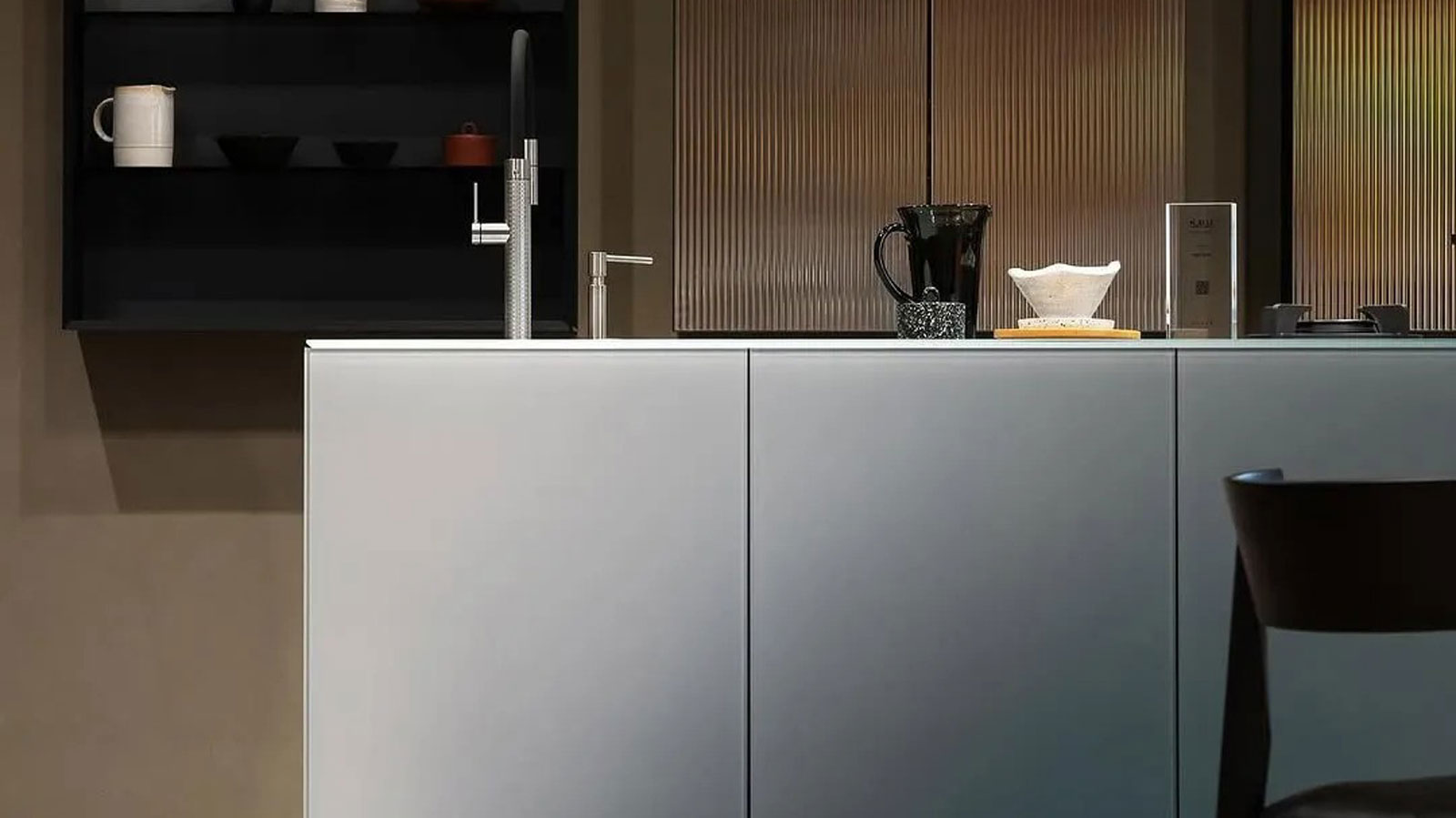Here's how to use the lotus symbol in Feng Shui to upgrade your home
After an easy design boost? This is how to use the lotus symbol in Feng Shui to enhance your interiors


Becoming acquainted with how to use the lotus symbol in Feng Shui is key if you are looking to enhance your home with the ancient Chinese tradition in mind. The flower is one of the most iconic images to come from the practice and has several special meanings that experts believe can help boost the balance and harmony of your living spaces.
However, to understand how you can best use the lotus symbol in your home environment, it's important to learn what Feng Shui is in the first place. The well-respected approach to interior design is focused on creating rooms to promote good energy flow and that are in sync with the natural world – which can include everything from decluttering to furniture placement and decor.
The latter also includes plants, which can bring a simple and aesthetically pleasing natural element to your spaces.
How to use the lotus symbol in Feng Shui
We will take you through what the lotus, one of the most significant, symbolizes as well as the best ways to incorporate it into your home – whether as the real flower or as decor – and which areas of the home will see its placement bring the most powerful effects.

Lotus symbol in Feng Shui and meaning
The lotus is one of the main plants with particular Feng Shui meanings. 'It is regarded as a divine flower in India, China and the Far East, so you’ll often find it in religious imagery across multiple cultures and beliefs,' explains Suzanne Roynon, H&G's Feng Shui expert and founder of Interiors Therapy. 'It’s a flower for contemplation, deep thinking and enlightenment, as well as connecting with deities including the Buddha, and Hindu, Sikh and Dao gods and goddesses.'

Suzanne is a Feng Shui consultant, interiors therapist and author of Welcome Home, How Stuff Makes or Breaks your Relationship – available at Amazon. She specializes in understanding the energetic impact of homes and certain possessions may have on all aspects of life, health and relationships, and the ways in which ‘stuff’ can actively prevent people and families from thriving and enjoying the lifestyle they deserve.
As such, the lotus flower is key in the practice of Feng Shui. 'It symbolizes purity and perfection,' explains Diana Hathaway, interior and Feng Shui designer. 'But what makes the lotus an iconic symbol of Feng Shui is that its perfection is revered not just for its good looks, but also its struggle to simply bloom. The lotus has inspired the saying “no mud, no lotus,” to remind everyone that perfection and beauty are often created through struggle.'
Indeed, this all stems from the way it grows – overcoming many environmental obstacles in dark, murky waters. This also makes it a lucky plant. 'The lotus flower begins as a seed buried in mud that eventually blooms on the water surface with beautiful clean petals,' notes Jane Lee, member of the Association of Professional Declutterers and Organisers and founder of Jane Lee Interiors. 'It also symbolizes purity, growth, harmony, and compassion in Feng Shui.' She adds that its seven petals also represent the seven chakras, which are considered to be energy centers all over the body and come from the traditions of Hinduism and Buddhism.

How to use the lotus symbol in Feng Shui in your home
The lotus flower is a little different from other plants – because they can often struggle to thrive indoors. If you are up for the challenge, Victoria Cedeno, interiors expert at Zinus, recommends: 'Place a real lotus in your bathroom, or opt for a small indoor fountain or bowl of water with floating lotuses if you have space in your home.' However, if that's not possible then its recognizable shape can be portrayed in artwork and fabric.
Indeed, Lee notes that there are a number of clever ways to stylishly and subtly add it to the interior design of your environment. This includes a statement wall, which can be achieved using Farrow & Ball wallpaperl bearing the lotus flower shape that comes in dozens of different colorways.
Additionally, you can stock up your kitchen with crockery bearing the flower's design, like this plate from Matches and this gold OKA candleholder would make a great focal point at the center of a dining room table. Additionally, you can channel its harmonious powers in these decorative cushions from Target.
Where in your home to harness the flower's strongest energy? Amanda Gibby Peters, a Feng Shui consultant and the founder of Simple Shui, suggests putting a lotus symbol at the heart of your living space. 'Placing one near the center of your home will have its “influence” rippling out into all areas of your life,' she explains. Feng Shui tradition also says that a lotus in the northeast of your home will encourage meditation and focus, while in bedrooms it can promote harmony and compassion.
FAQs
How do I get started with Feng Shui?
It might sound complicated, but incorporating Feng Shui into your living spaces is actually rather straightforward. 'There are some very simple ways to uplift the energy in your home and introduce Feng Shui,' notes Sher. Start by evaluating your entryway Feng Shui. 'The front door relates to prosperity,' she continues. 'Fix any disrepair, freshen the paintwork, add plants and place a welcome mat outside to invite in positive energy.'
Then consider your hallway. 'In Feng Shui, this area relates to opportunities, and so it is important to keep it clutter-free and place shoes and coats inside a closed cupboard, since they block the energy from circulating freely,' explains Sher. 'Have on display a vase of fresh flowers to uplift energy and to further draw in new opportunities, and also hang a mirror on the wall – but not directly opposite the front door.'
How to organize my room according to Feng Shui?
This is particularly important when understanding Feng Shui in your living room, a place where you and loved ones will spend a lot of time. 'This space is connected to family harmony and prosperity, and so select furniture that is both comfortable and respects the proportions of the space,' notes Priya Sher, a Feng Shui consultant. There are similar themes when it comes to Feng Shui in the bedroom. 'This is a space for both relaxation and romance,' adds Sher. 'Keep wall colors light and neutral, reduce electrical items and install a headboard. Additionally, a double bed with identical bedside tables will enhance balance in the relationship.'
What is not good in Feng Shui?
Common areas where mistakes are made are the kitchen and bathroom. 'The former relates to health and also relationship harmony for the occupants,' explains Sher. 'Avoid too much black and red as that causes a fire (red) and water (black) crash, and ensure that you don't place the sink (water) and cooker (fire) opposite each other as that can lead to arguments between couples.' She continues: 'The bathroom must always be kept clean with the door closed and toilet lid down. Introduce some plants here – they soak in water, which is believed to slow the flow of wealth draining away.'
Want to turn your fortunes around? Including the lotus symbol in a home office it is believed to create abundance and growth, while it can attract wealth if placed near the front door.
Sign up to the Homes & Gardens newsletter
Design expertise in your inbox – from inspiring decorating ideas and beautiful celebrity homes to practical gardening advice and shopping round-ups.
Lauren Clark is a freelance writer and editor with more than eight years of digital and print journalism experience. She covers all aspects of lifestyle, specialising in health and wellness topics, and her work has previously been published in titles such as Women's Health, The Times, Daily Telegraph, Stylist, Woman & Home, Grazia and Dazed.
-
 Using my Iranian grandma's fridge trick keeps my crisper drawer pristine – and fresh produce lasts twice as long
Using my Iranian grandma's fridge trick keeps my crisper drawer pristine – and fresh produce lasts twice as longIt's amazing how a simple tweak can make such a big difference
By Punteha van Terheyden
-
 This decorative kitchen innovation – inspired by a 2000s color trend – will reshape kitchen design in 2026
This decorative kitchen innovation – inspired by a 2000s color trend – will reshape kitchen design in 2026This ombre kitchen finish caught our attention at the Milan Design Week – here's why we think it will rewrite decorative kitchen design in the future
By Jennifer Ebert